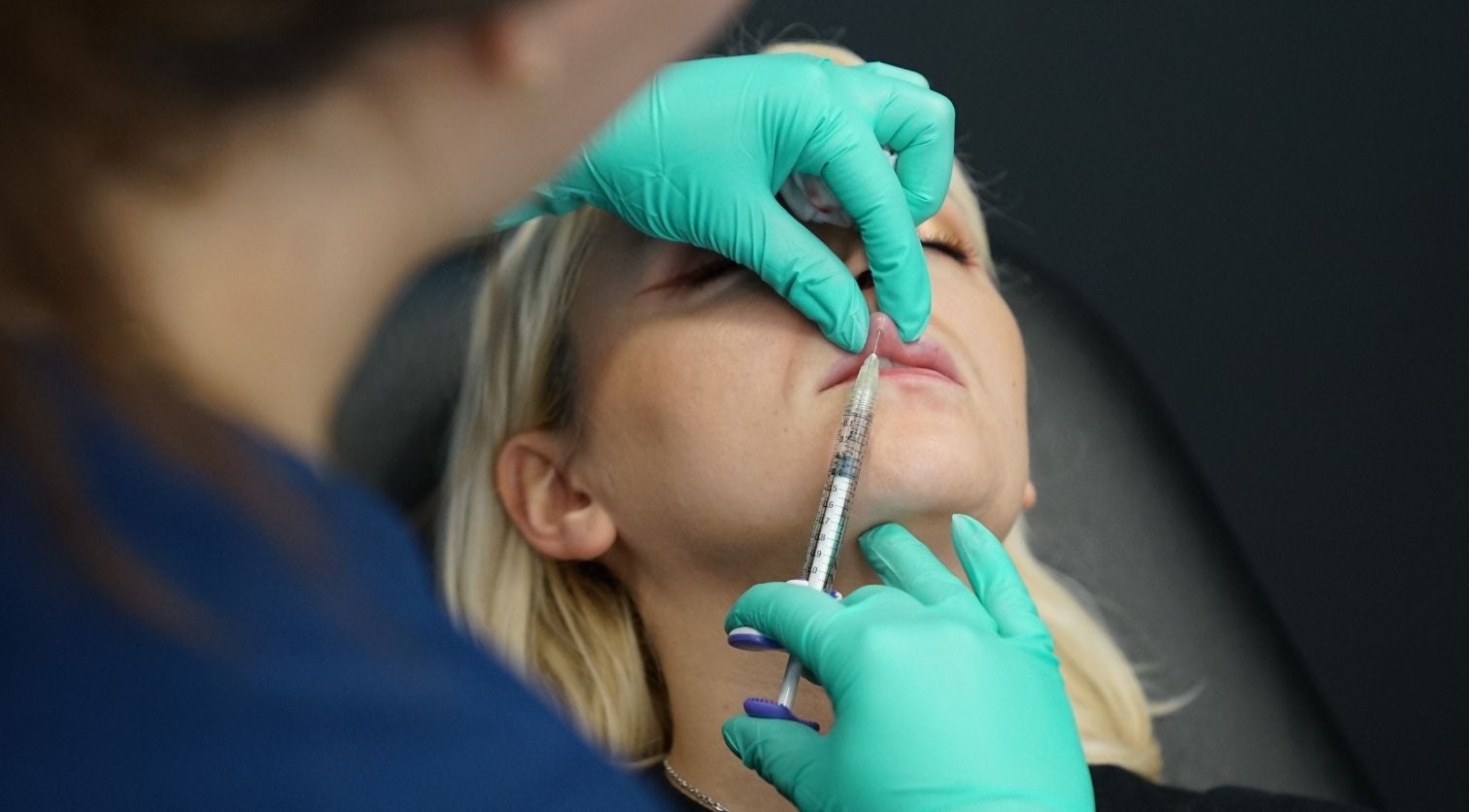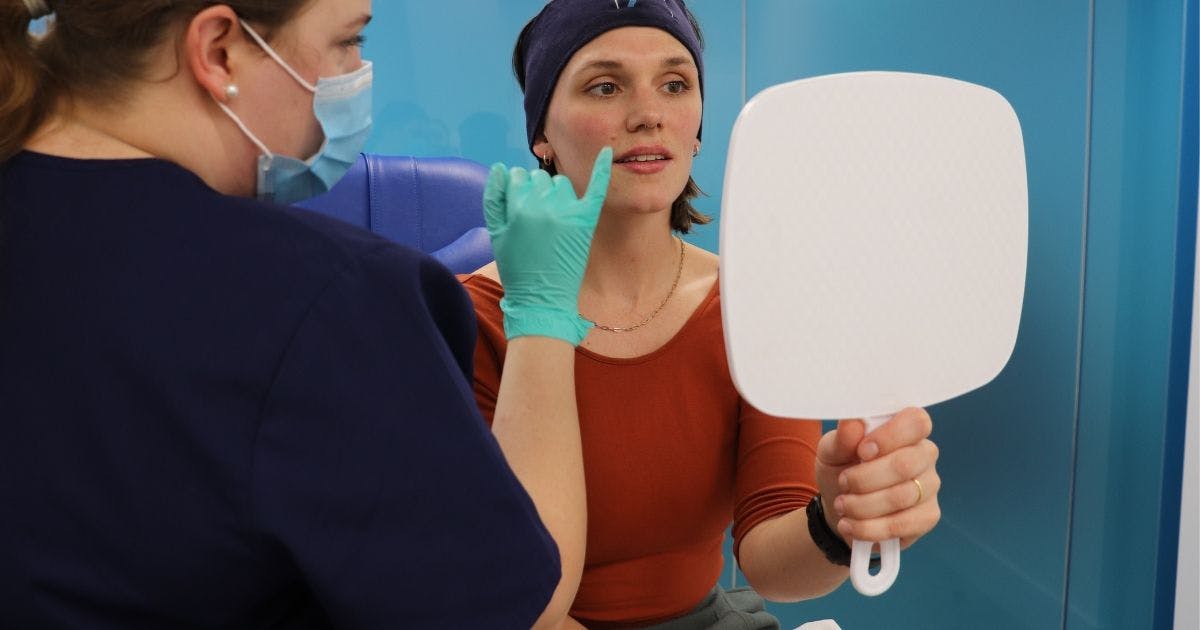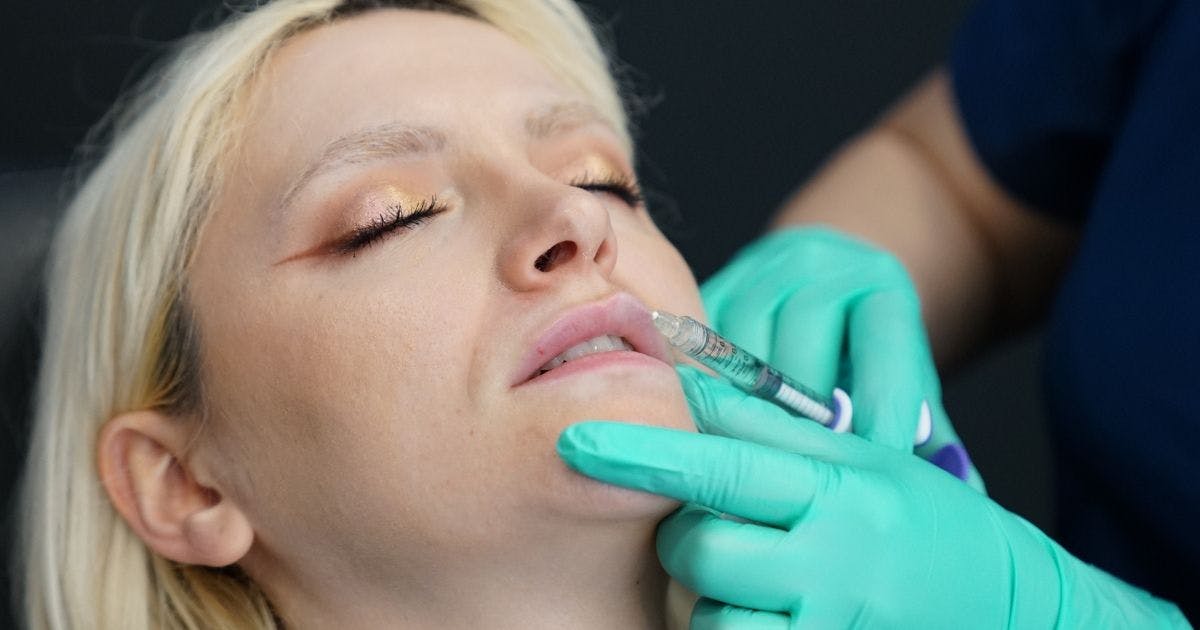What Are the Main Causes of Lopsided Lip Filler Results?

No one wants an uneven outcome, so what are the main causes of lopsided lip filler results? And how do we prevent them?
We interviewed Dr Karla Orsine Murta Dias, clinical trainer, aesthetics specialist and Harley Academy Level 7 graduate.
She gave us so many valuable insights that this is the first of a four-article series on how to ensure balanced lip augmentations.

Why lip filler courses are so popular
First, let’s dive into why aesthetics practitioners often focus on perfecting their lip filler techniques.
You can achieve this through undertaking in-depth medical aesthetics training that offers a thorough grounding in all filler cornerstone treatments. This can be courses such as our Level 7 Diploma in Botox & Dermal Fillers.
Alternatively, it can be by completing foundation training in injectables followed by a dedicated lip filler course, such as our Perioral & Lip Filler Masterclass.
One of the most popular cosmetic injectable treatments
As you may know, lip filler is one of the most popular cosmetic treatments. Frequently, injectors find that it’s their most-requested treatment after upper face botox. As such, it’s understandable that any injector would want to introduce this to their practice. It makes good business sense, and not just from a revenue standpoint.
If you can deliver great, safe and reproducible results, you’ll not only build a loyal patient base, but they’ll also recommend you to their friends. Who doesn’t love some word-of-mouth marketing?!
As a new aesthetics practitioner, your goal here should be to learn how to…
- Holistically assess your lip augmentation patients
- Provide safe, natural-looking, even lip filler results
- Avoid uneven outcomes
- Understand how to prevent complications
- Give your patients the best possible experience.
This involves developing a careful understanding of facial anatomy, theory, observing cases and having your own hands-on practical aesthetics training. We recommend always training where you don’t have to share patients. This allows you to experience the full scope, as you would in a real-world clinical practice.

Building and protecting your reputation as an aesthetics practitioner
Before we look at how to prevent lopsided results in part two of this interview, it’s important to understand the causes.
Whilst everyone can experience complications or undesirable outcomes, the key is to be competent and confident enough to minimise this risk. Additionally, you should know what to do if certain situations do arise - which is far beyond the knowledge gained on a one-day course!
Through detailed study and specialist practical guidance, you can become a confident, safe and skilled injector. This is the type of aesthetics practitioner patients want to see, so build and protect your reputation. You can do this by truly investing in educating yourself about how to get the best possible outcomes for your clients.
Now, on with Dr Karla’s insights…
Main causes of lopsided lip filler results
“Lopsided lip filler results can occur due to a variety of factors,” Dr Karla advises.
Injection technique
She explains, “Improper injection techniques, such as uneven distribution of filler or asymmetrical placement of injections can lead to lopsided results. Injectors must maintain symmetry and balance when administering lip fillers to achieve harmonious outcomes.
Anatomical variances
“Natural anatomical variations between the left and right sides of the face can predispose individuals to asymmetrical results. These differences can affect how the filler settles and distributes within the lips, potentially leading to unevenness,” Dr Karla describes.
Lip filler product migration
“Over time, filler material may migrate or disperse unevenly within the lip tissue. This can cause one side to appear fuller or more pronounced than the other,” she adds.
Swelling and healing
Another factor Dr Karla highlights is how, “Immediate post-injection swelling can temporarily mask asymmetries or unevenness in lip filler results. As swelling subsides and the tissues heal, the asymmetrical distribution of filler may become more apparent. This can result in lopsidedness.”
Patient factors
“Individual patient factors, such as pre-existing asymmetries, tissue laxity, or healing dynamics, can influence the appearance of lip filler results. Injectors should assess each patient's unique facial anatomy and characteristics to anticipate and address potential asymmetries,” she recommends.

How to avoid uneven lip filler results for your patients
Now you understand more about what can cause uneven lip filler results, you know what you need to be cautious of.
You’ll gain a wealth of additional insights into preventing lopsided outcomes in the second part of Dr Karla’s interview. In part two of this four-part series, she’ll discuss the approaches you can take to ensure uniform outcomes for your lip filler patients.
Follow Harley Academy on Instagram and turn on your alert notifications by clicking on the bell icon, to be alerted when we publish the next instalment!
In the meantime, for hands-on lip filler training courses for healthcare professionals, check out our Injectables Courses page.
All information correct at the time of publication
Download our full prospectus
Browse all our injectables, dermal fillers and cosmetic dermatology courses in one document
By submitting this form, you agree to receive marketing about our products, events, promotions and exclusive content. Consent is not a condition of purchase, and no purchase is necessary. Message frequency varies. View our Privacy Policy and Terms & Conditions
Attend our FREE open evening
If you're not sure which course is right for you, let us help
Join us online or in-person at our free open evening to learn more
Our Partners














STAY INFORMED
Sign up to receive industry news, careers advice, special offers and information on Harley Academy courses and services

